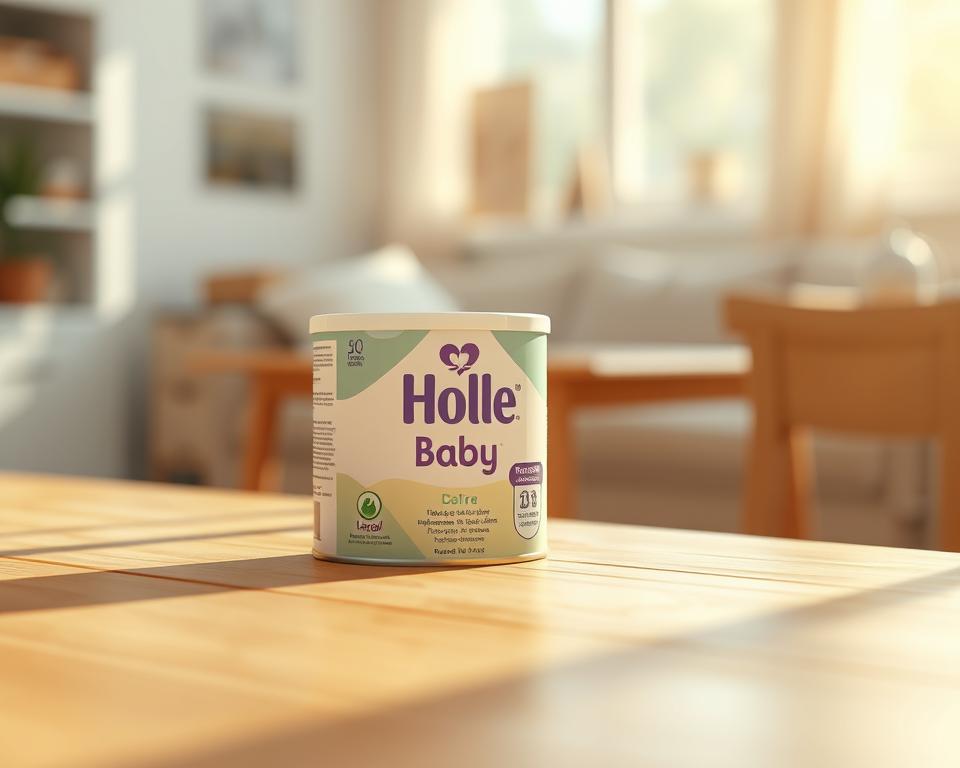Browse Performance ATV Parts with American Off-Roads
Can one simple upgrade change the way you ride and boost your confidence on the trail?
Count on American Off-Roads, a U.S.-based source for ITP Blackwater evolution plus speedy and rider-first help. We help riders shop smart with a curated catalog that focuses on real needs and real results.
Check out products from trusted brands like SuperATV: hard-coated polycarbonate windshields, Rhino 2.0 chromoly axles, high-clearance A-arms, wireless synthetic-rope winches, and terrain-tuned tires.
Open category pages to align parts with your vehicle and riding goals quickly. Our filters, specs, and friendly guidance make it easy to move from planning to install without delays.
Kick off your build with trail-tested parts for durability and performance to make every ride feel more capable and enjoyable.

Main Points
- Get a curated selection with rider-focused support at American Off-Roads.
- From SuperATV: durable windshields, axles, suspension, winches, and tires.
- Filters and straightforward navigation reveal compatible items fast.
- Stocked essentials shorten the time from purchase to install.
- Performance parts enhance power delivery, sharpen handling, and boost ride confidence.
Shop by Vehicle: Polaris, Can-Am, Honda, Kawasaki, Yamaha, CFMOTO and More
Pick your make and model to quickly find parts that fit—no guesswork. We group listings by brand/model so upgrades match factory design and mounts.
Polaris RZR and RZR 1000 Upgrades
Locate RZR-focused kits—bolt-on suspension, driveline support, and terrain-matched tires. Kits for the rzr 1000 cut install time and lower the need for custom work.
Can-Am Maverick and Maverick X3 Essentials
Can-am maverick riders can focus on reliability and cockpit comfort. Essentials include stronger axles, upgraded shocks, and vented windshields to improve long days.
Fitment for CFMOTO / Honda / Kawasaki / Yamaha / Arctic Cat
Each brand differs in frame layout and clearance. Our fitment notes call out those design choices so you pick components that respect geometry and keep mounting straightforward.
UTV vs ATV: Choosing Parts That Match Your Vehicle and Riding Style
Know your platform: a utv (side-by-side) needs different suspension, doors, and storage than a single-seat machine. Choose parts by payload, terrain, and how you ride.
- Platform hubs organize tires, suspension, windshields, and driveline per vehicle.
- Trail, mud, dune, and work guides align upgrades to real needs.
- Kits built per model lower fabrication time and get you riding sooner.
American Off-Roads helps riders choose the right combination of components so every upgrade adds clear value.
ATV Aftermarket Parts
Build a complete ride from driveline to windshield using gear that fits and lasts. We collect components so you can plan cohesive upgrades without guesswork.
Performance Builds: Power, Suspension, and Driveline
Kick off with matched packages that pair clutching, suspension tuning, and driveline strength. Because kits are engineered to complement each other, delivery and handling improve together.
Choose suspension upgrades like high-clearance A-arms from SuperATV to gain ground clearance while maintaining steering geometry. Rhino 2.0 heavy-duty axles use chromoly plus special heat treatment for added durability under load.
Protection First: Armor, Doors, Bumpers, and Skid Plates
Shield high-impact zones using bumpers, doors, tree kickers, and skid plates. Bolt-on armor reduces repair time and helps you ride harder with less worry.
Clear Visibility — windshields, mirrors, lighting
Improve visibility with hard-coated polycarbonate windshields that resist scratches, plus mirrors and upgraded lighting for longer, safer days on the trail. Winches with synthetic rope and wireless remotes add dependable recovery when it counts.
- Build power/control with matched driveline and clutch kits.
- Pick suspension parts that boost clearance without hurting handling.
- Reinforce axles and hubs where real abuse happens.
- Prefer bolt-on parts to save time in the garage.
| Part | Primary Benefit | Example Product | Approx. Install Time |
|---|---|---|---|
| Driveline Kit | Improved torque capacity | Rhino 2.0 axle set | 2–4 hours |
| Suspension | More clearance and control | High-clearance A-arms (SuperATV) | 2–6 hours |
| Protection | Impact resistance | Skid plates & bumpers | 1–3 hours |
| Sightlines | Clear sightlines & night use | Hard-coated polycarbonate windshield | ~0.5–1.5 hrs |
Pro tip: Match parts to terrain and balance gains with upkeep. If you want selection help, our rider-first team will guide you to value and durability.
Top Categories for Upgrades
Browse focused categories to quickly match upgrades to style and terrain. Each area is organized so you can compare features, clearance, and pricing easily.
Tire Choices: all-terrain/mud/trail
Choose tires by terrain using clear tread guidance. SuperATV offers Warrior for balanced trail use, Terminator for deep mud, and Intimidator for aggressive traction.
Wheels/Spacers for stance and handling
Tune stance/stability with wheels and spacers; Polaris 4/156 patterns help tune track width and scrub for handling.
Suspension: A-Arms, Lift Kits, and Shocks for Tough Conditions
Select A-arms, lift kits, and shocks to add clearance and maintain precise steering. Use matched components for predictable performance on rough trails.
Windshields / Doors / Mirrors / Storage
Compare full/flip/half windshields for airflow, noise, and visibility. Outfit doors, lower valances, and body armor for added protection without excess weight.
Mirrors improve rear/side visibility in tight woods and open desert. Add boxes, racks, and in-cab storage to keep essentials secure for long rides.
Recovery setups: mounts & winches
Use mounts and kits to place lights, audio, and navigation within easy reach. Fit a properly sized synthetic-rope winch with wireless remote for confident recovery.
- Use category pages to compare products/accessories side by side quickly.
- Apply fit/clearance/budget filters to narrow options fast.
Featured Brands Riders Trust
A smart parts selection starts with brands known for fitment and field performance.
SuperATV stands out with rider-tested designs focused on practical gains. The range includes hard-coated polycarbonate windshields, high-clearance boxed/adjustable A-arms, and Rhino 2.0 chromoly axles.
Synthetic-rope, wireless winches deliver reliable recovery. Choose Warrior/Terminator/Intimidator tires for terrain-specific tread. Many SuperATV items use bolt-on fitment to cut install time and add value.
Leading Industry Brands: complementary parts
American Off-Roads curates brands that complement one another so riders can mix products without compromise.
- Explore SuperATV for trail performance and durability.
- Find parts across suspension, windshields, axles, tires, winches, and body protection.
- Compare accessories and evaluate warranty, value, and install complexity before you buy.
Trail testing lets our team highlight best-in-class gear so you build with confidence and minimal surprises.
Fitment Confidence: Year/Make/Model Tools and Install Tips
Use fitment tools to make fast, confident decisions about upgrades and reduce surprises at install time.
Start with the Year/Make/Model selector to confirm exact or universal fit before adding to cart. Product pages clearly state compatibility and list whether an item is model-specific or broad-fit.
Use Vehicle Selectors to Verify Exact or Universal Fit
Check product fitment details to confirm hardware, torque specs, and re-torque intervals. This quick check saves hours and provides peace of mind.
Model-Specific Design Minimizes Install Time
Many SuperATV and similar designs are engineered for bolt-on installs that require basic tools. Model-specific layouts reduce install time and custom work.
- Confirm bolt pattern, offset, and mounting points before ordering.
- Check notes for included hardware and torque specs.
- Pre-stage tools, threadlocker, and wiring routes to save time.
| Fitment Step | Reason | Expected Result | Tip |
|---|---|---|---|
| Y/M/M selector | Ensures exact fitment | Reduced returns, faster installs | Run before adding items |
| Product fitment notes | Shows hardware & specs | Correct tools and torque ready | Verify included bolts |
| Model-specific design | Reduces fabrication | Install completes in less time | Plan wiring routes in advance |
Performance and Upgrade Pathways for Serious Riders
Lay foundations first so performance upgrades don’t outrun reliability.
Axles, Clutching, and Driveline Reinforcement
Begin by strengthening the driveline: carrier bearings, clutching, and axles. SuperATV Rhino 2.0 axles use chromoly and advanced heat treatment for added durability on rocky or muddy trails.
Upgrading these components first helps larger tires and extra weight age well. Skipping this step risks breakage and higher long-term costs.
Balancing power, weight, and handling
Align suspension and tuning with your goals. Adjustable A-arms let you recenter alignment and gain tire clearance without hurting steering feel.
On polaris rzr/rzr 1000 and can-am maverick builds, pair tire size, gear reduction, and clutch tuning for best results.
- Use matched kits to keep geometry and handling balanced.
- Balance weight added by doors/armor/winches with clutch/power upgrades to keep response.
- Test changes in stages and carry spares like belts and key hardware to avoid long downtime.
We outline smart upgrade sequences so you avoid overspending or losing drivability. Ask our team for platform-specific setup tips and recommended kits to reach your performance goals.
Armor & durability across conditions
A solid armor plan protects critical systems so you ride longer and wrench less.
We spotlight armor that adds true protection without extra weight. SuperATV offers doors, tree kickers, bumpers, nerf bars, and skid plates built for bolt-on installs and field testing.
Select armor based on terrain and service needs. Use thicker skids for rock gardens and lighter valances for desert dust.
- Add front/rear bumpers to spread impact into the frame and shield radiators/winches.
- Full doors or lower door valances protect the cab and side bodywork from sticks and brush.
- Tree kickers/nerf bars deflect stumps before contacting vulnerable points.
| Protection Type | Main Benefit | When to Choose |
|---|---|---|
| Bumpers | Frame load distribution | High-impact/rocky trails |
| Doors or Valances | Protects cab/side body | Brushy/wooded terrain |
| Skid Plates | Protects underbody from gouges | Rock, trail ruts, and heavy debris |
Confirm torque after initial rides and recheck periodically. Make sure upgrades don’t block service access or tire clearance. Build a layered defense—armor plus smart line choice—so you ride more and repair less.
Need help ranking parts for best protection per dollar? We can suggest SuperATV and other proven options tailored to your terrain and budget.
Visibility, Comfort, and Communication for Longer Rides
Simplify long runs by improving visibility, adding audio, and using smart mounts for secure access.
Mirrors and windshields — trail to desert
Choose full, flip, or half windshields to fine-tune airflow, dust control, and visibility for your climate and trails.
SuperATV windshields use hard-coated polycarbonate for scratch resistance and long-term clarity.
Side and rear mirrors raise awareness in tight woods and open desert transitions.
Soundbars and Audio Gear to Improve the Experience
Audio bars and radios add comfort on long rides and keep comms clear into the night.
Use sturdy mounts to position soundbars, GPS, and radios within reach. Quick-release mounts let you swap open and enclosed setups fast.
- Install LED whips and dome lighting for safe returns when night falls.
- Route power/signal wiring neatly to prevent chafe and noise.
- Balance weight/placement to prevent rattles and preserve handling.
| Upgrade | Benefit | Tip |
|---|---|---|
| Full / Flip / Half windshields | Airflow/dust control | Choose flip for adjustable airflow |
| Side & rear mirrors | Improved awareness | Set before riding |
| Soundbar & mounts | Comfort plus clear comms | Use vibration-damping mounts |
| LED whips/dome lights | Better night visibility/safety | Use fused circuits for power |
American Off-Roads guides riders to proven UTV accessories that improve comfort without complicating installs. If you need help choosing mounts/whips/windshield styles for your side-by-side, our team will recommend reliable, easy-fit options.
Deals & Clearance — save on proven parts
Save on proven upgrades during seasonal clearances that make quality gear attainable.
Seasonal discounts and time-limited promos help you stretch the budget. Events spotlight trending products and value bundles across popular categories.
Seasonal bestsellers & limited-time offers
Check rotating deals to catch price drops on tires, windshields, soundbars, mirrors, and recovery gear. These short windows move stock quickly, so act when you see a match.
- Use clearance to score proven parts and accessories at sharp prices while inventory lasts.
- Watch for limited-time offers on tires, windshields, and recovery gear to complete your build for less.
- Leverage bundles to maximize savings on matched components that install together.
- Look at open-box and last-chance listings for extra discounts.
- Come back often—updated deals mean more SuperATV rollbacks to catch.
| Type | Typical Items | Benefit |
|---|---|---|
| Clearance | Mirrors/soundbars/add-ons | Deep discounts on proven inventory |
| Seasonal | Tires, windshields | Seasonal prep with savings |
| Bundle Deals | Matched gear kits | Lower per-component cost |
Use savings to round out safety/maintenance items and ride more with less worry. Time purchases around trips to get ready before the trail calls.
Trending & new products to check out
New arrivals spotlight smart upgrades riders actually use.
Explore new wheels and tires that refine stance/traction with minimal fabrication. SuperATV often releases refreshed Rhino 2.0 axles, updated windshields, and CVT belts tested for harsh use.
Discover kits that bundle hardware and mounts for cleaner installs and fewer trips to the shop. Keep modular storage solutions on your radar—boxes and racks that lock down cargo and cut rattles.
Track trending add-ons—whips, rock lights, switch packs—for night visibility and style. Look for limited runs and clearance tied to recent model changes for polaris rzr and others.
- Set brands side by side to match budget with terrain needs.
- Queue promising items so you’re ready for peak weekends.
- Check fit notes to confirm hardware and avoid install surprises.
| Category | Reason | Example |
|---|---|---|
| Wheels/Spacers | Refines stance and handling | Updated wheel designs |
| Driveline/Belts | Load-ready durability | Rhino 2.0 axles & CVT belts |
| Storage/Kits | Cleaner installs and secure cargo | Modular racks and bolt-on kits |
ATV/UTV Community: ride more, wrench smarter
Explore community tips that help you ride more and wrench smarter.
Events, Tips, and Content for Enthusiasts
American Off-Roads supports the community with ride ideas, install tips, and event highlights. We share seasonal guides to prep trips and maintain builds with less guesswork.
Follow ride reports and event highlights to inspire your next destination.
See how riders kit machines—from recovery gear to creature comforts. Explore SuperATV-focused how-tos that translate directly to real-world upgrades.
- Tap into our content to ride more, wrench smarter, and get more out of every weekend.
- Share your ride stories and setups to help other riders learn new tricks.
- Promote responsible off-roading with prep lists, etiquette, and planning.
Stay connected for route ideas, product updates, and platform-tuned workshop wisdom. American Off-Roads is here to support the community with accessible guidance and practical insights.
Shopping services that put riders first
Fast shipping and clear returns help upgrades arrive on schedule and ready to install.
We prioritize fast fulfillment, secure packaging, and straightforward returns so you can focus on the ride. U.S. shipping is quick, and we track each order to delivery.
Orders ship in protective packaging so they arrive install-ready.
- Fast U.S. shipping with clear tracking shows delivery ETAs in your account.
- Returns are simple with step-by-step swap instructions.
- Fitment accuracy reduces returns and adds peace of mind before checkout.
Product-savvy rider support
Our rider team installs/uses the same products we sell, delivering practical, fast answers.
- Ask about torque specs, break-in tips, and installation pointers.
- We’ll recommend storage options, wiring routes, and mounting strategies for your build.
- Keep purchase history in your account to plan future upgrades and shop smarter.
To Summarize
Unify your project with bolt-on solutions to maximize trail time and reduce garage time.
SuperATV spans the big upgrade paths—windshields, suspension, axles, winches, doors, tires—so you can pick proven, long-lasting components.
From wheels and whips to utv accessories and protective doors, American Off-Roads helps riders shop smart and view install tips that simplify the job.
Browse the curated catalog, secure what you need, join the community for tested advice, and plan upgrades for changing conditions.
Build with confidence, ride with purpose, and enjoy the off-road life to the max.









